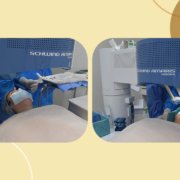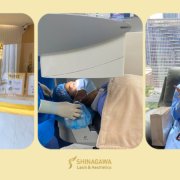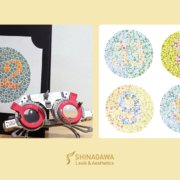Warm weather means sunshine, swimsuits, shorts — and so much shaving!
If you dread warm weather because of the additional skin exposure, Laser Hair Removal is a good option to consider; it can greatly reduce your grooming demands.
Let us first cover everything you need to know about Laser Hair Removal.
1. How does it work?
Laser Hair Removal devices use a light source that specifically targets the pigment in the hair itself. The quick pulse of light and energy essentially heats and melts the hair and subsequently damages the hair follicle. This prevents future hairs from growing in the follicle.
2. How many treatments will I need?
The process only works during the hair’s growth cycle, so the procedure is often done multiple times. You may have great results after three treatments, or it sometimes takes as many as nine.
Treatment needs can vary because the laser targets melanin, or dark pigment, in the hair follicles. The darker your skin is, the harder it is to distinguish between the skin color and the pigment in the follicles. You can still get good results, but it may take more treatments. If you have light skin and dark hair, you will likely get good results after just a few treatments.
3. Does it work for everyone?
It works with all kinds of hair, except for gray hair.
4. How should I prepare for the procedure?
It’s a good idea to stay out of the sun as much as possible before the procedure.
Ultraviolet light stimulates melanocytes, which create more melanin (pigment) in the skin. The greater the contrast between skin color and hair color, the more effective the treatment.
You should also avoid shaving for three or four days before the treatment. If the hair has grown out some, it makes it easier for the technician to see it. Definitely avoid waxing or depilatories as they pull the hair out of the follicle, leaving no target for the laser.
5. How long does it take?
This depends on the area being treated. Smaller areas like the chin or underarms may only take about 20 minutes; a leg or full back can take as long as an hour and a half.
6. Does Laser Hair Removal hurt?
The treatment is just a little uncomfortable at worst because there are nerves attached to the hair follicles.
7. Are there areas where it doesn’t work?
Laser Hair Removal works just about anywhere, including the legs, arms, back, underarms, and bikini line. The only places that are off-limits are ones that can’t be seen such as inside the nostrils and around the orbit of the eyes.
8. What can I expect after treatment?
The treatment is effective for most people and is very safe.
The only problems you might experience afterward are a little swelling, redness, or irritation around the hair follicles. This can last for a couple of days.
Hyperpigmentation (skin darkening) also sometimes occurs, but that typically fades pretty quickly. Burns or blisters may arise, but they are very uncommon.
9. Will the hair grow back?
You may need a touch-up here and there — especially if you have a lot of body hair — but the overall effects of the procedure are lasting.
However, hormones sometimes complicate things. If you have an endocrine issue that increases your testosterone (such as polycystic ovary syndrome, a condition that causes a hormone imbalance), you may have to return for more touch-ups. Hair also sometimes grows back after pregnancy or menopause.
Considering Laser Hair Removal? Let’s walk you through the process. We have the best at Shinagawa Aesthetics!
Schedule a consultation with our skin experts! Call our Patient Care Lines: (+632) 7-368 5238 l (+63) 917 862 7454 l (+63) 921 217 0517 for inquiries, questions, and appointments or talk to our consultants via LiveChat here on our website.






